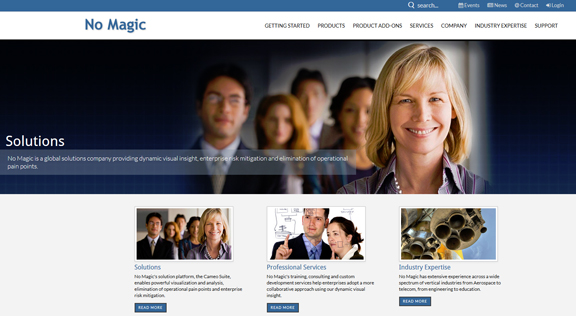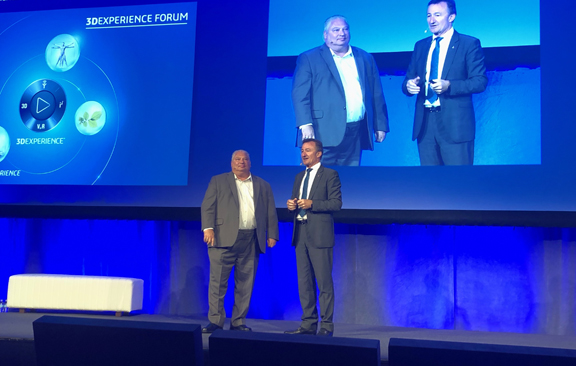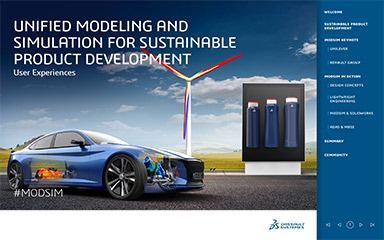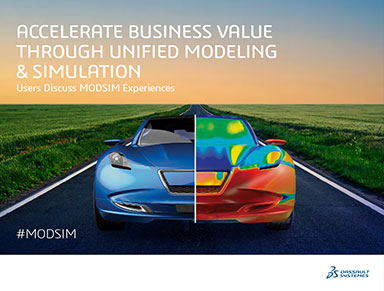Dassault Systemes Closes Acquisition of No Magic to Bolster IoT Lineup

Dassault Systemes completes its acquisition of No Magic, a model-based systems engineering software provider based on Texas, Allen.
Latest News
June 20, 2018
Last November, Dassault Systemes (DS), best known for its 3DEXPERIENCE modeling and collaboration software, announced its intent to acquire the Texas, Allen-headquartered No Magic. Today, DS announced the deal is complete, effectively making No Magic an official part of DS.
With this purchase, DS takes another step toward IoT—or IoE (Internet of Experiences), in DS’s nomenclature.
“The acquisition of No Magic strengthens DS’s industry solution experiences based on the 3DEXPERIENCE platform by generalizing systems engineering for developing the Internet of Experiences—the smart and autonomous experiences that are digitally connecting products, nature and life in the physical world,” said DS in its announcement today.
No Magic’s flagship product is MagicDraw, a process modeling software. The software draws and records diagrams in JAVA and UML (Unified Modeling Language), making the files readable and editable in other diagramming and system modeling software. It’s used for, among other things, modeling business processes, complex system design, and software behavior.
In the November announcement, Philippe Laufer, DS’s CEO, CATIA, said, “The acquisition of No Magic will position DS as the undisputed leading provider of solutions for all systems embedding software and establish an environment where building, testing and releasing software can happen rapidly, frequently and more reliably.”
 Dassault Systemes completes its acquisition of No Magic, a model-based systems engineering (MBSE) software provider based on Texas, Allen.
Dassault Systemes completes its acquisition of No Magic, a model-based systems engineering (MBSE) software provider based on Texas, Allen.On Stage at 3DEXPERIENCE Forum
This morning, at the 3DEXPERIENCE Forum (Boston, June 19-21), DS CEO Bernard Charles invited No Magic’s CEO Gary Duncanson to the main stage, to officially welcome him to the corporate family.
As a preferred buyer, “[DS] was an obvious choice,” said Duncanson, because “the culture and the vision are all aligned.” He added, “We’re all about systems, and systems of systems modeling. We put the rigor back in systems engineering. Breaking down the silos between the engineering groups and other parts of the company can really help your business.”
DS’s decision to acquire No Magic was announced merely months after the two formed a partnership in August 2017, to “jointly collaborate with existing and new leading customers, bringing teams together to transform their business from product innovation to experience innovation, through a smooth introduction of Model Based Systems Engineering (MBSE).”
With deep roots in design and manufacturing, DS has a robust lineup of model-based design solutions, focused on the use of detailed 3D models for product development and testing. In the last decade, due to the growing use of embedded systems and software in connected devices, diagram-style system-modeling tools such as MagicDraw also become an essential part of product development.
 Magic CEO Gary Duncanson (left) and Dassault Systemes CEO Bernard Charles (right) appeared on stage together at 3DEXPERIENCE Forum this week.
Magic CEO Gary Duncanson (left) and Dassault Systemes CEO Bernard Charles (right) appeared on stage together at 3DEXPERIENCE Forum this week.Filling a Gap in Model-Based System Engineering
For DS, the acquisition of No Magic is an easy way to fill the small but critical gap it lacks the expertise to tackle on its own.
On LinkedIn, Christian Muggeo, a MBSE and PLM analyst from CONTACT Software, observed, “To be honest, it was a matter of time [before] one [of] the big PLM vendors without a Systems Engineering tool for the early phase of product development will reach out for No Magic ...” but also expressed his concern that “No Magic’s ecosystem gets integrated in [DS] ENOVIA and the brand No Magic disappears from the market” (”My ‘fears on’ and ‘wishes for’ the acquisition of No Magic by DS,” October 2017).
In its press release in November, DS promised, “While providing continuity for No Magic’s customers, DS will integrate No Magic’s solutions into its 3DEXPERIENCE platform, complementing and reinforcing CATIA applications.”
An Essential Component of IoT
Model-Based Systems Engineering, commonly abbreviated as MBSE, is a new territory for 3D design and PLM vendors like DS. But it proves to be a necessary ingredient in the path to IoT.
PTC, a rival of DS in CAD and PLM sectors, transformed itself into an IoT-centric solution provider. Today, PTC forges ahead in IoT product development with its ThingWorx suite.
PTC describes its Integrity Modeler as “the leading solution for SysML, UML and variability modeling, all integrated within a single tool.”
The presence of an MBSE solution in a design software maker’s portfolio doesn’t automatically guarantee IoT success. However, the absence of it, could be a handicap in its courtship of those developing connected devices.
Subscribe to our FREE magazine, FREE email newsletters or both!
Latest News
About the Author
Kenneth Wong is Digital Engineering’s resident blogger and senior editor. Email him at [email protected] or share your thoughts on this article at digitaleng.news/facebook.
Follow DE





